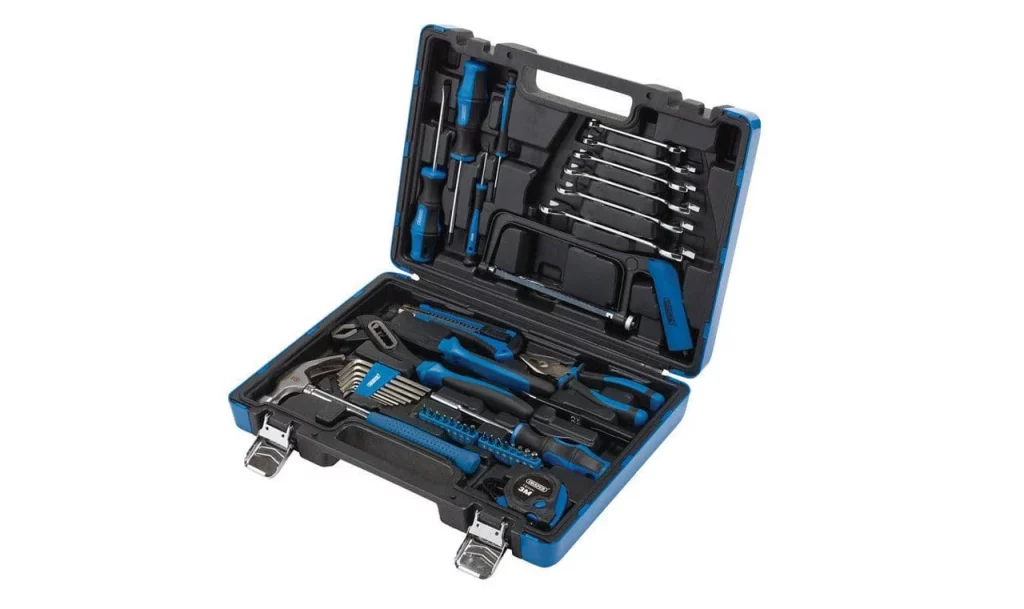If you want to achieve precision and efficiency in your machining operations, you need cutting tools that are reliable, durable, and versatile. That’s why Sandvik cutting tools are the go-to solution for many industries and applications.
From drilling and milling to turning and threading, Sandvik offers a wide range of cutting tools that can handle any task with ease. Whether you’re working with steel, aluminum, or exotic alloys, Sandvik has the right tool for the job.
In this article, we’ll explore the benefits of using Sandvik cutting tools, their different types and applications, as well as some tips on how to select and maintain them. Let’s dive in!
Why Choose Sandvik Cutting Tools?
When it comes to cutting tools, there are many options available in the market. However, not all of them can deliver the same level of quality and performance as Sandvik tools. Here are some reasons why Sandvik is a top choice for many professionals:
1. High-Quality Materials
One of the key features of Sandvik cutting tools is their high-quality materials. They are made from premium-grade carbide, cermet, ceramics, or high-speed steel (HSS), depending on the application requirements.
These materials are carefully selected and processed to ensure optimum hardness, toughness, wear resistance, and thermal stability. As a result, Sandvik tools can withstand high temperatures, pressures, vibrations, and other harsh conditions without losing their edge or integrity.
2. Innovative Designs
Another advantage of Sandvik cutting tools is their innovative designs. They are engineered to maximize performance while minimizing waste and downtime.
For example, Sandvik Coromant’s PrimeTurning technology enables turning in all directions with one tool instead of several conventional ones. This reduces cycle times by up to 50% and tooling costs by up to 70%.
Similarly, Sandvik Walter’s Xtra·tec XT milling cutters feature a unique insert geometry that allows for high feed rates and depths of cut, resulting in faster and deeper machining with fewer passes.
3. Wide Range of Solutions
Sandvik cutting tools are not limited to specific applications or industries. They have a wide range of solutions that can meet the needs of various sectors, such as aerospace, automotive, medical, energy, and general engineering.
Some examples of Sandvik cutting tools include:
– CoroDrill: solid carbide drills for drilling deep holes with high accuracy and stability.
– CoroMill: indexable milling cutters for face milling, slotting, profiling, and chamfering.
– CoroTurn: modular toolholders for turning, threading, grooving, and parting off.
– CoroTap: tap holders and taps for making threads in different materials and sizes.
– Capto: multi-tasking tooling system for turning, milling, drilling, and boring in one setup.
Types of Sandvik Cutting Tools
Now that we’ve seen some benefits of Sandvik cutting tools let’s take a closer look at their different types and applications.
1. Drilling Tools
Drilling is one of the most common machining operations that require cutting tools. Whether you need to drill deep holes or produce accurate bores, Sandvik has a wide range of drilling tools to choose from.
For example, the CoroDrill 860 series offers solid carbide drills with internal coolant channels for efficient chip evacuation and heat dissipation. They are suitable for drilling steel, stainless steel, cast iron, aluminum, titanium alloys, and other materials.
If you need to drill large-diameter holes up to 1000 mm (40 inches), you can use the CoroDrill 880 series with exchangeable heads. They are designed for roughing and finishing operations on long-chipping materials such as aluminum and non-ferrous metals.
2. Milling Tools
Milling is a versatile machining process that can produce flat, curved, or complex surfaces with high precision and speed. Sandvik offers a variety of milling tools for different applications and materials.
For example, the CoroMill 316 series is a range of indexable milling cutters for general-purpose milling of steel and cast iron. They have strong cutting edges and positive rake angles for smooth chip evacuation and reduced cutting forces.
If you need to mill hard-to-cut materials such as titanium, Inconel, or hardened steels, you can use the CoroMill 390 series with its unique insert geometry and grade system. They are designed for high-speed and high-feed milling with low vibration and tool deflection.
3. Turning Tools
Turning is a common operation in lathe machines that involves removing material from a rotating workpiece using cutting tools. Sandvik has a wide range of turning tools for different types of lathes and workpieces.
For example, the CoroTurn 107 series is a modular toolholder system for external turning, facing, profiling, and threading. It has a compact design that allows for more inserts per holder and higher metal removal rates.
If you need to turn difficult-to-machine materials such as superalloys or stainless steels, you can use the CoroTurn 300 series with its advanced grades and coatings. They are designed for high-speed and heavy-duty turning with improved wear resistance and toughness.
4. Threading Tools
Threading is a process of producing internal or external threads on a workpiece using taps or dies. Sandvik offers a range of threading tools for different thread forms and sizes.
For example, the CoroTap series includes tap holders, taps, and extension adapters for making threads in steel, stainless steel, aluminum alloys, cast iron, brass, and other materials. They have optimized geometries and coatings that provide high performance and long tool life.
If you need to thread large-diameter or difficult-to-cut materials, you can use the CoroTap 300 series with its oversized taps and carbide inserts. They are designed for threading pipes, valves, turbine casings, and other heavy-duty components with reduced torque and improved chip evacuation.
Tips on Selecting and Maintaining Sandvik Cutting Tools
Now that we’ve seen some types of Sandvik cutting tools let’s see some tips on how to select and maintain them.
1. Identify Your Requirements
Before selecting a Sandvik cutting tool, you should identify your machining requirements such as material type, part geometry, surface finish, tolerance range, cutting parameters, etc. This will help you choose the right tool geometry, grade, coating, and size for your application.
You can consult with Sandvik experts or use online selection tools such as MySandvik Coromant or Toolguide to find the best match for your needs.
2. Optimize Your Processes
Once you have selected the right Sandvik cutting tool for your application, you should optimize your machining processes to achieve maximum efficiency and quality. This includes setting proper speeds, feeds, depths of cut, coolant flow rates, chip breakers, etc.
You can use software solutions such as MachiningInsights or CoroPlus to monitor and analyze your machining data in real-time and make informed decisions on process improvements.
3. Maintain Your Tools Properly
To ensure the longevity of your Sandvik cutting tools and avoid premature wear or damage, you should maintain them properly. This includes cleaning them regularly from chips and coolant residues, storing them in dry and secure places when not in use, inspecting them for signs of wear or damage before each use, sharpening or replacing them when needed.
You can follow Sandvik’s recommendations on tool maintenance or attend training courses on tool handling and care.
Conclusion
Sandvik cutting tools are a reliable, durable, and versatile solution for achieving precision and efficiency in your machining operations. They come in various types and applications that can meet the needs of different industries and materials.
By selecting the right Sandvik cutting tool for your application, optimizing your processes, and maintaining your tools properly, you can maximize your productivity, quality, and profitability.
If you want to learn more about Sandvik cutting tools or get expert advice on your machining challenges, you can visit their website or contact their representatives.
Wiki Reference:
https://en.wikipedia.org/wiki/Cutting_tool_materials
Hyperlinks to Other Authoritative Websites:
https://www.sandvik.coromant.com/
https://www.sandvik.com/




